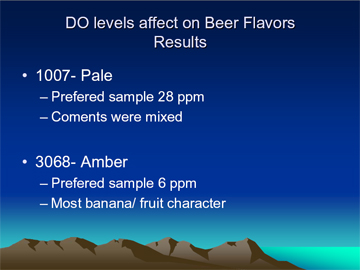SpanishCastleAle
Well-Known Member
If there were no growth you wouldn't need to aerate in the first place.With proper pitching no large scale cell growth is going on.

If there were no growth you wouldn't need to aerate in the first place.With proper pitching no large scale cell growth is going on.
so the white labs document states that "Pumping air through a stone is not efficient". i guess they mean that because it takes 4 minutes longer than the other methods? just seemed like an odd conclusion to me. i certainly wouldn't consider 40/60 seconds vs. 5 minutes significant.
I think they're saying spending money and increasing risk of contamination in order to take 5x-7.5x more time (not including sanitizing the stone/etc.) = not efficient. 'Efficient' is relative. But you're right, 5 minutes is nothing on the scale of how long a batch takes to brew (it's only ~1% of my brewday).so the white labs document states that "Pumping air through a stone is not efficient". i guess they mean that because it takes 4 minutes longer than the other methods? just seemed like an odd conclusion to me. i certainly wouldn't consider 40/60 seconds vs. 5 minutes significant.
You seem a little bent out of shape over this, and I'm not sure why.
...
I agree with you that the methods of the White Labs folks were clearly superior, but their findings support rather than refute the work I cited.
If there were no growth you wouldn't need to aerate in the first place.
I just noticed that we've been saying white labs but it's a wyeast presentation.
remilard addressed the 'how much growth' earlier itt. The rest of your post just reinforces the 'would not need to aerate in the first place' even more. There is a reason the dry yeast mfrs. give their yeast those reservoirs...so they can grow. We don't need to go back and forth on this, I just think me and a few others thought it necessary to correct the 'I pitch the correct amount so no large scale growth occurs' (paraphrased) statement because it's incorrect.I said no large scale growth not no growth at all.
Depends on the yeast too
Nottingham British Ale yeast has been conditioned to survive rehydration. The yeast contains an
adequate reservoir of carbohydrates and unsaturated fatty acids to achieve active growth. It is
unnecessary to aerate wort.
There always will be O2 in the wort unless you are doing everything in a sealed environment or are fermenting in the boil pot
remilard addressed the 'how much growth' earlier itt. The rest of your post just reinforces the 'would not need to aerate in the first place' even more. There is a reason the dry yeast mfrs. give their yeast those reservoirs...so they can grow. We don't need to go back and forth on this, I just think me and a few others thought it necessary to correct the 'I pitch the correct amount so no large scale growth occurs' (paraphrased) statement because it's incorrect.
If you're referring to pitching rate then it's actually around 1 million cells of viable yeast, for every milliliter of wort, for every degree Plato. If you pitch such that you only need one generation, you over-pitched. The dry yeast is given enough reservoirs to get 3-4 generations (for a reason).again with proper pitching no large scale growth is needed
When 100 g active dried yeast is used to inoculate 100 litres of wort, a yeast density of 510 million
cells per millilitre is achieved.
optimum yeast count is 10 million per milliliter correct? so if you have between 5 and 10 the yeast only need to reproduce once not the 6 to 8 times as been said. I dont call one generation large scale reproduction

Am I missing something? I'm pretty new so that's probably the case, but is there some significant benefit to using O2 aerating pumps and stones and other such fancy equipment? I figured as long as the wort gets aerated enough that the yeast are able to do their job and effectively go from your planned OG to your planned FG, you've succeeded.
You could start with the wyeast powerpoint referenced repeatedly in this thread.
Some people are trying to do better than "perfectly good".
According to the wyeast powerpoint, 9ppm DO correlates to 1.5 yeast doublings, and 26ppm correlates to 1.7 yeast doublings. Is that enough to make a noticeable difference in the end product? The powerpoint does not give enough information to answer that question IMHO. Please read my post a couple up.
Did you read the entire powerpoint? You don't consider significant evidence of qualitative differences demonstrated in blind tasting to be information?
